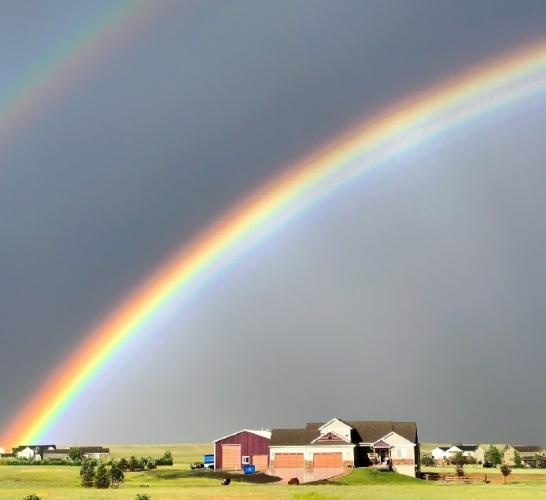Split Rainbows
 Jan Curtis
Jan Curtis
Notice how the rainbow starts to split further up the arc, creating white bands where the two rainbows overlap but not perfectly. Splitting in a primary rainbow is refered to as a twinned rainbow if it is split two ways, or a multisplit rainbow if it is split more.
Split rainbows are very rare, too rare to study thoroughly. The accepted theory is that they are formed by different shaped raindrops. In a twinned rainbow the lower is formed by large raindrops slightly flattened by air resistance, the upper formed by raindrops small enough to remain spherical. These drops could be from the same shower, or from different locations (as long as they are within the viewers rainbow cone).
The rainbow is influenced by the shape of the drop, thus the outer rainbow formed by the small spherical drops is a perfect circle, where as the inner rainbow formed by the distorted drops is a slightly flattened circle (wider than it is tall).
Twinned Rainbows - AtOptTwinned rainbows can be computer simulated with spherical and slightly flattened drops, supporting this theory. Physically-Based Simulation of Rainbows
Here is a multisplit rainbow. The bottom rainbow can be explained by flattened drops, but the cause of the faint rainbow above the primary is debatable. One hypothesis is that it is caused be elongated raindrops, but elongated drops are not as stable as flattened or spherical drops, making this explanation debatable. A multi-split rainbow from south-east China, August 12th, 2014
Note that the secondary rainbow is not affected by splitting, which is typical of split rainbows.Twinned Rainbows - AtOpt
Next Page: Supernumerary Rainbows
